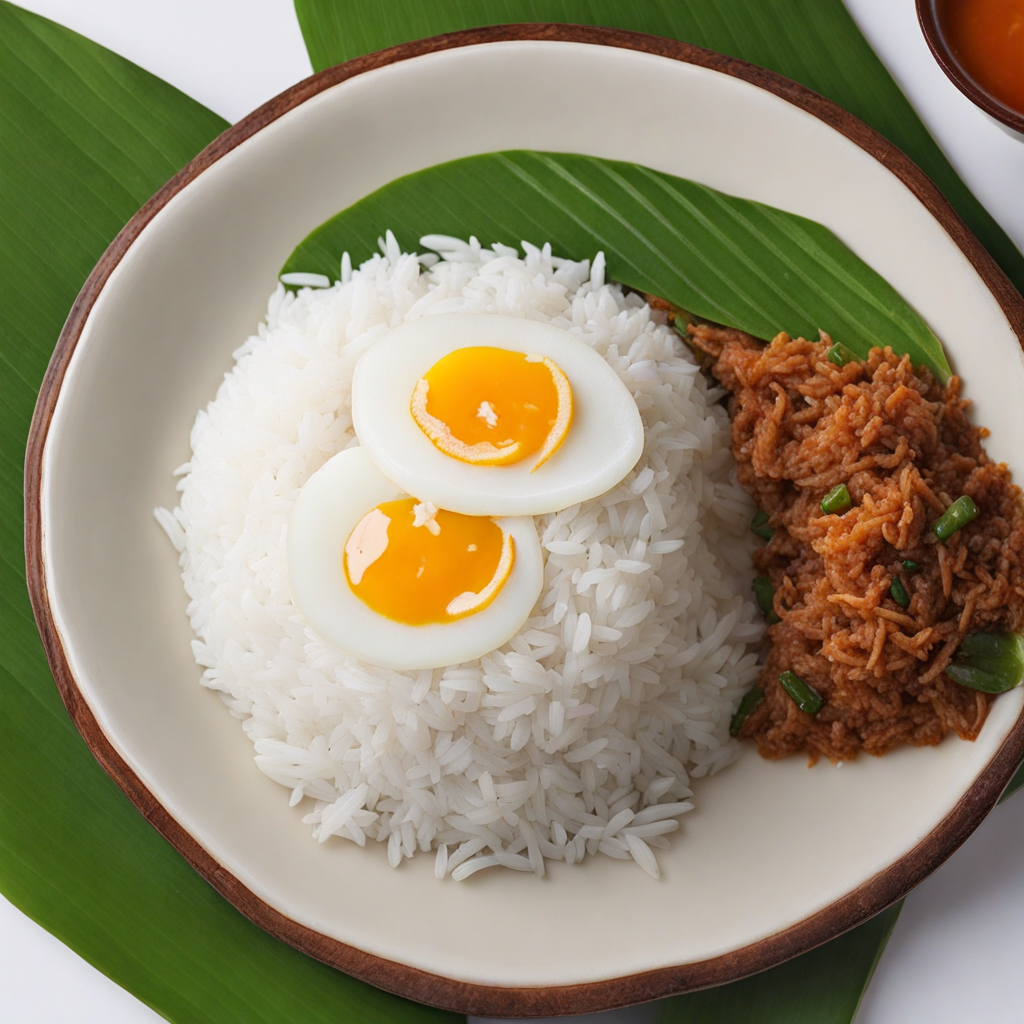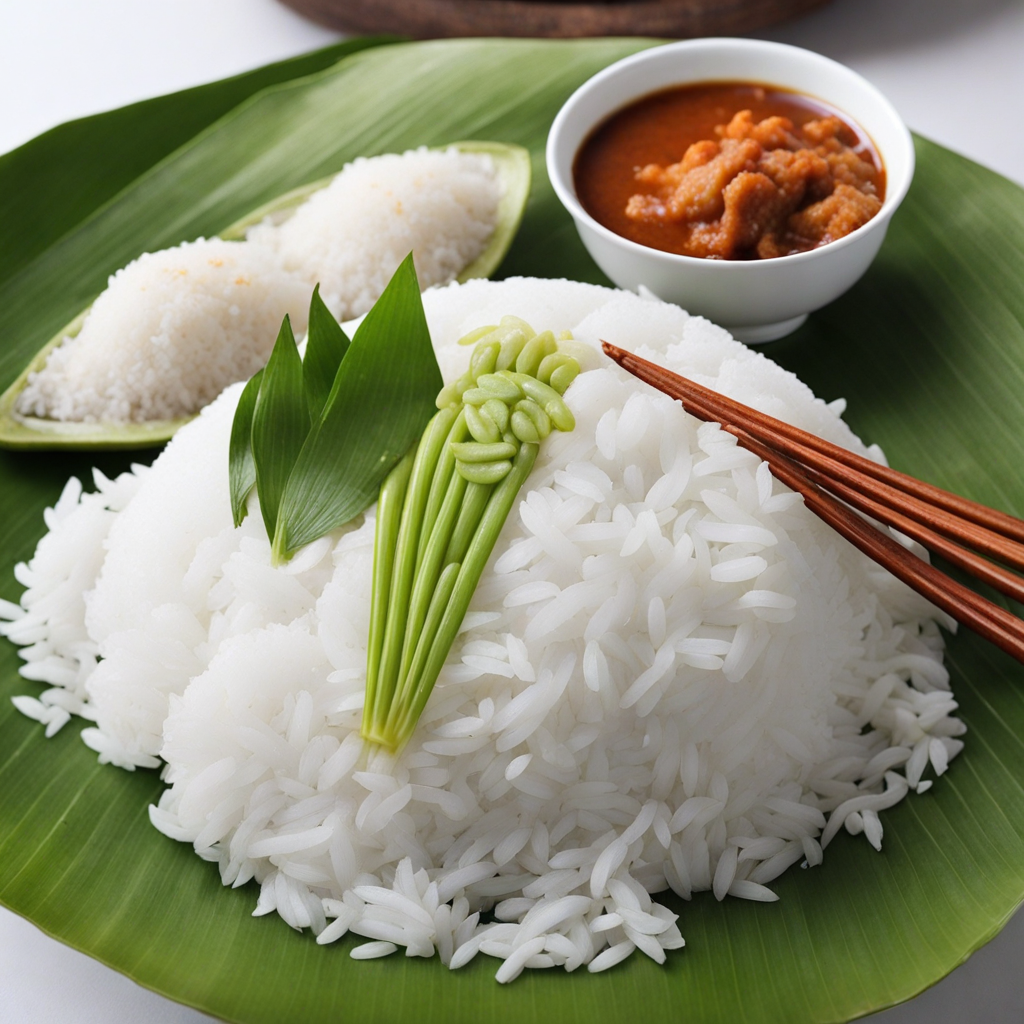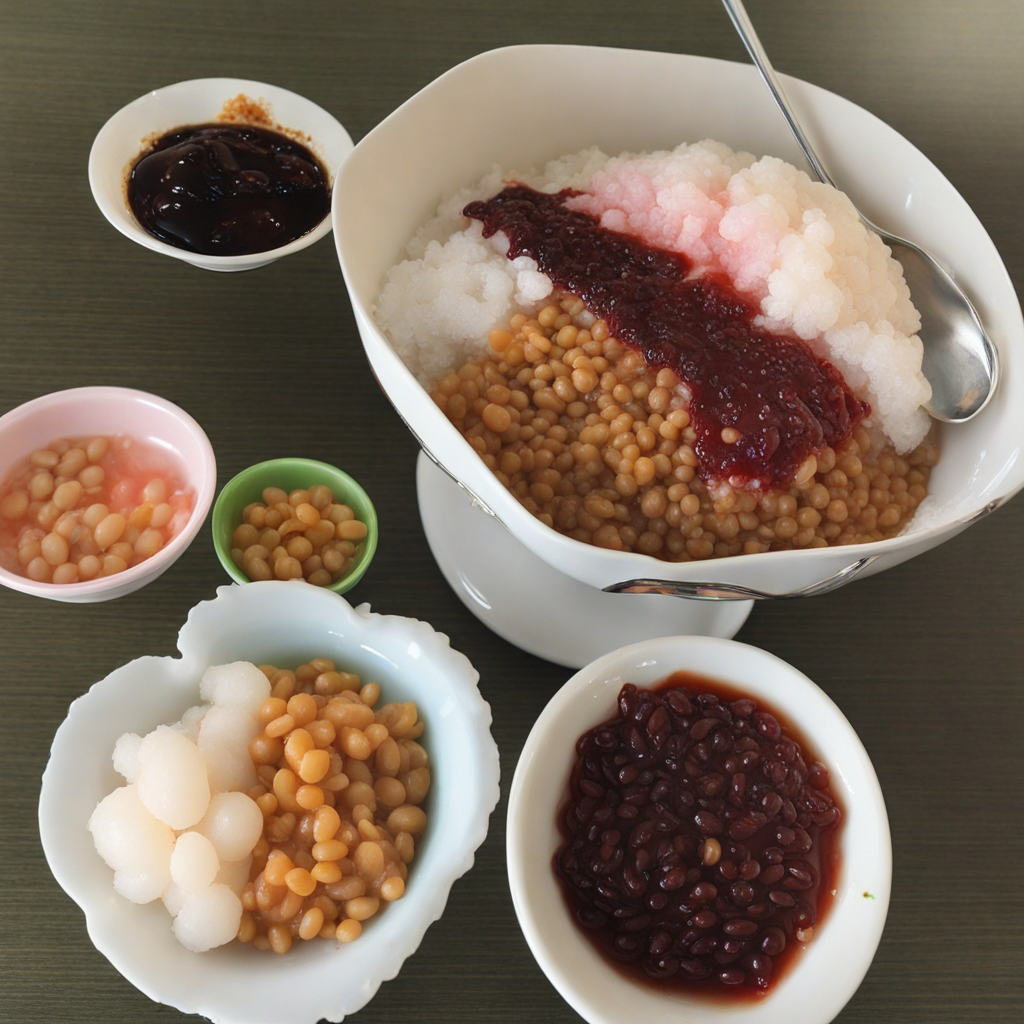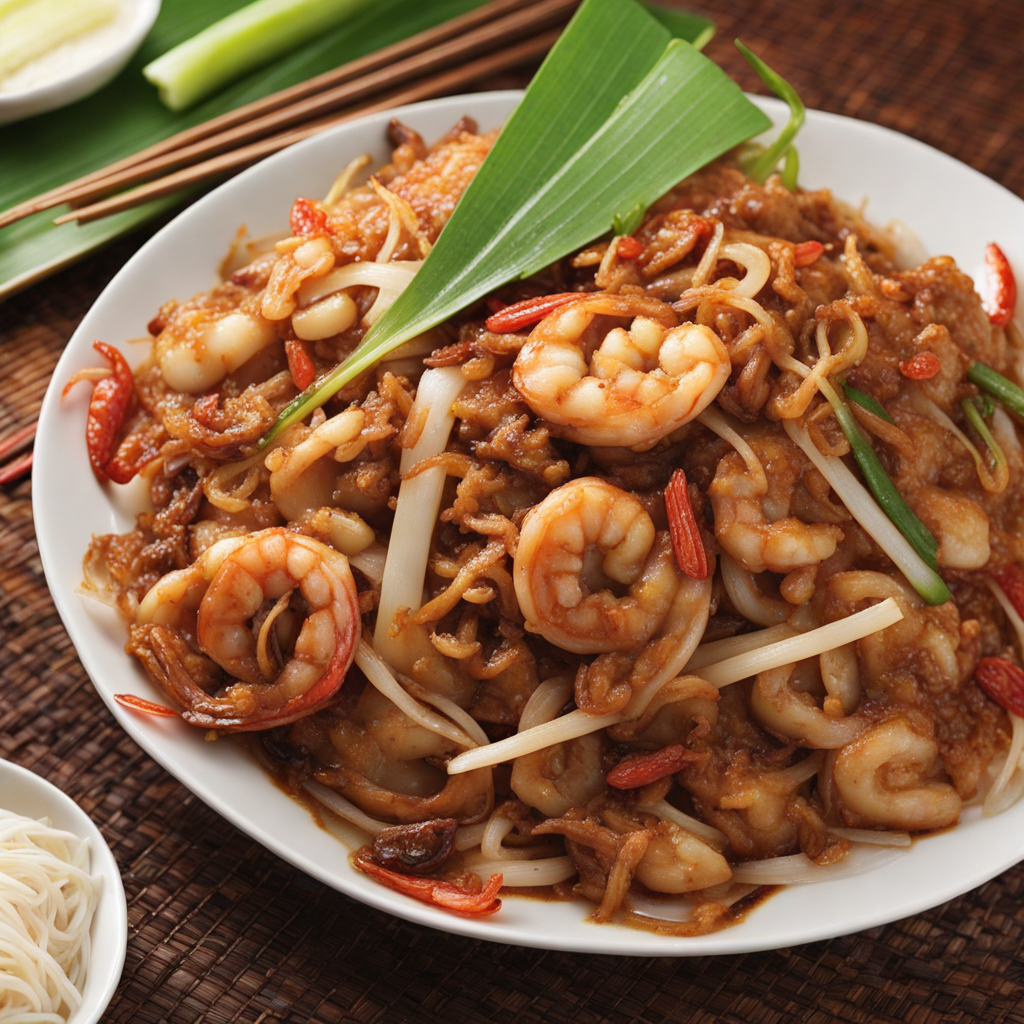Nasi Lemak
Nasi Lemak is a fragrant and flavorful rice dish that is often considered Malaysia's national dish, capturing the essence of its diverse culinary heritage. The rice is cooked in coconut milk, which imparts a rich, creamy texture and a subtle sweetness. This unique preparation elevates the simple ingredient of rice into a delectable and aromatic base that pairs beautifully with a variety of accompaniments. The delightful aroma wafting from the rice is often enhanced with pandan leaves, adding an additional layer of fragrance that makes it irresistible. Nasi Lemak is typically served with a medley of side dishes that introduce a harmonious balance of flavors and textures. The star of the dish is usually sambal, a spicy chili paste that ranges from mildly to intensely fiery, depending on personal preference. Alongside the sambal, you’ll often find crispy fried anchovies, crunchy peanuts, and a hard-boiled or fried egg, all contributing to the dish's satisfying crunch and protein content. Additionally, cucumber slices add a refreshing contrast, making every bite a delightful experience filled with varying textures. To further enhance the meal, Nasi Lemak is often accompanied by a selection of savory sides such as fried chicken, rendang (slow-cooked dry curry), or a luscious curry dish. These additions create a satisfying and well-rounded meal that showcases the complexity of Malaysian flavors. Whether enjoyed as breakfast, lunch, or dinner, Nasi Lemak is a celebration of taste that invites food lovers to explore the bold and vibrant culinary traditions of Malaysia, making it a must-try for anyone looking to discover a new and exciting dish.
How It Became This Dish
The Delightful Journey of Nasi Lemak: Malaysia's Quintessential Dish Nasi lemak, a fragrant coconut milk-infused rice dish, is often considered the national dish of Malaysia. It is a culinary embodiment of Malaysia's rich cultural tapestry, representing the confluence of Malay, Chinese, Indian, and indigenous influences. As we delve into the history of nasi lemak, we will explore its origins, cultural significance, and evolution over time, revealing how this humble meal has become a beloved staple across Southeast Asia. Origins of Nasi Lemak The origins of nasi lemak are closely tied to Malay culture, with its roots tracing back to the Malay Peninsula. The term "nasi" means "rice," and "lemak" translates to "rich" or "creamy," which aptly describes the dish's key ingredient: rice cooked in coconut milk. Historical records suggest that the dish may have been consumed by Malay farmers and fishermen as early as the 19th century. This was a time when the cultivation of rice was well-established in the region, and the use of coconut milk was common in local cuisine. Coconut trees thrive in the tropical climate of Malaysia, making coconut milk a readily available source of fat for cooking. The practice of cooking rice with coconut milk likely evolved as a way to enhance the flavor and richness of the staple grain. The combination of rice and coconut milk became a nutritious and satisfying meal for the laborers who worked in the fields and along the coasts. Cultural Significance Nasi lemak is more than just a dish; it is a cultural icon that resonates deeply within Malaysian society. It is traditionally served with a variety of accompaniments that contribute to its unique flavor profile. The classic version includes sambal (a spicy chili paste), fried crispy anchovies (ikan bilis), toasted peanuts, hard-boiled or fried eggs, and cucumber slices, all served with a side of rich, fragrant coconut rice. These components come together to create a balance of flavors: the spiciness of sambal, the umami of anchovies, the crunch of peanuts, and the creaminess of the coconut rice. The dish is commonly eaten for breakfast but is enjoyed at any time of the day. It holds a special place in Malaysian culture as a unifying food that transcends ethnic boundaries. Nasi lemak is served in homes, roadside stalls, and upscale restaurants alike, making it accessible to people from all walks of life. It has also become a symbol of Malaysian identity, celebrated during festivals and gatherings, and often featured in national events. Evolution Over Time As Malaysia underwent significant social and economic changes throughout the 20th century, so too did nasi lemak. The post-colonial period saw an increase in urbanization, and with it, the rise of street food culture. Nasi lemak became a favorite among city dwellers, leading to the emergence of numerous stalls and hawker centers dedicated to serving this dish. Street vendors began to innovate, experimenting with different ingredients and presentations, which contributed to the dish's growing popularity and versatility. In addition to the traditional accompaniments, modern interpretations of nasi lemak have emerged, incorporating influences from other cuisines. For instance, fried chicken, rendang (a spicy meat dish), and even variations featuring shrimp or squid have become common additions. This evolution reflects Malaysia's multicultural society, where diverse culinary traditions blend and influence one another. The dish's adaptability is evident in its integration into various dining contexts. Nasi lemak can be found in casual settings, such as food courts and night markets, and in more formal environments, including fine dining establishments where chefs reimagine the dish with gourmet flair. The rise of social media in the 21st century has further amplified the popularity of nasi lemak, with food bloggers and influencers showcasing visually appealing presentations of the dish, thus attracting a younger audience and global interest. Nasi Lemak in Contemporary Malaysia Today, nasi lemak is not just a beloved food; it is a subject of national pride. The Malaysian government has recognized its significance, promoting it as a symbol of Malaysian culture and heritage. Events such as the annual Nasi Lemak Fest celebrate the dish, bringing together chefs, food enthusiasts, and tourists to honor its culinary legacy. This event highlights the importance of food in fostering community and preserving cultural traditions. In recent years, various adaptations of nasi lemak have emerged as Malaysia's culinary scene continues to evolve. For example, vegetarian and vegan versions of the dish have gained popularity, catering to a growing health-conscious demographic. Some restaurants offer nasi lemak in a deconstructed style, allowing diners to customize their choices, while others present it in a modern, upscale format that elevates the dish to new culinary heights. Furthermore, nasi lemak's popularity has transcended Malaysian borders, with international restaurants in cities like London, New York, and Sydney introducing the dish to a global audience. This has contributed to a broader appreciation of Malaysian cuisine and its diverse influences, showcasing the country's rich culinary heritage on the world stage. Conclusion Nasi lemak is more than just a dish; it is a symbol of Malaysia's cultural identity, history, and culinary richness. From its humble beginnings as a farmer's meal to its status as a national icon, nasi lemak has undergone a remarkable transformation over time. Its ability to adapt and evolve has ensured its place in the hearts and plates of Malaysians and food lovers around the world. As we savor the delightful combination of flavors that make up nasi lemak, we are reminded of the cultural exchanges and historical narratives that shape our culinary landscapes. This dish is a testament to the resilience and creativity of Malaysian cuisine, embodying the spirit of a nation that celebrates its diversity through food. Whether enjoyed in a bustling market or a fine dining restaurant, nasi lemak continues to unite people, telling a story of heritage, community, and the simple joy of sharing a meal together.
You may like
Discover local flavors from Malaysia







